This article was medically reviewed by Luba Lee, FNP-BC, MS. Luba Lee, FNP-BC is a Board-Certified Family Nurse Practitioner (FNP) and educator in Tennessee with over a decade of clinical experience. Luba has certifications in Pediatric Advanced Life Support (PALS), Emergency Medicine, Advanced Cardiac Life Support (ACLS), Team Building, and Critical Care Nursing. She received her Master of Science in Nursing (MSN) from the University of Tennessee in 2006.
There are 13 references cited in this article, which can be found at the bottom of the page.
wikiHow marks an article as reader-approved once it receives enough positive feedback. This article received 22 testimonials and 85% of readers who voted found it helpful, earning it our reader-approved status.
This article has been viewed 764,066 times.
Want to learn how to prevent lice during an epidemic? Maybe you just all-around don't want creepy crawlies in your head of hair? While the thought of head lice can be scary, they're usually less all-out threatening than we make them out to be. A few simple things will help you prevent lice so that you won't have to bother with treating the lice after they've cropped up.
Steps
Determining Symptoms and Avoiding Carriers
-
1Know the symptoms. As you might know, lice are little — about the size of a sesame seed — and can be white, brown, gray, or dark gray. They're most common around the ears and the back of the neck, and feed off of human blood. Nits are much more noticeable on darker-colored hair but lice is more noticeable on lighter hair.[1]
- The most common symptom of head lice is itchiness in and around the back of the neck.
- In many children, lice don't produce any symptoms until weeks or months after they've moved in. For this reason, it's important to do regular visual check-ups with a fine-toothed comb in order to spot an infestation as early as possible.[2]
- Doctors recommend combing for lice after the child has taken a bath/shower, while their hair is still wet.[3]
-
2Teach your kids the importance of not sharing certain items. Because head lice commonly affect young children in school, it's important to be vigilant about situations in which children may share certain objects. Although you probably want to encourage your children to share certain things, you probably want to discourage them from sharing the following:[4]
- Hats
- Headbands
- Hair accessories
- Pillows
- Combs
- Any other objects that promote direct head-to-head contact between a carrier and potential carrier.
Advertisement -
3Be aware of lice carriers. Obviously, although lice are irksome, they're not to be avoided like an infectious disease. Instead, be aware of anyone who may have had lice or is being treated. Knowledge is power.
- If somebody had lice and was treated, but it has not been two weeks since their treatment, make sure you try to avoid contact with any of their fabrics. You don't have to be afraid of them, but casually avoid situations which involve contact with them, especially head-to-head contact.
-
4Get checked. Lice can commonly occur in schools or summer camps. If your school or camp doesn't give out regular checks, ask the nurse for one every once in a while. If the nurse is unavailable, schedule an appointment with your child's general practitioner to check for lice.
- Lice is especially common among elementary aged children during winter.
Using Practical Prevention Strategies
-
1Steer clear of fumigants and other chemical sprays. These sprays are not necessary to kill head lice and can do more harm than good if inhaled or ingested.[5]
-
2Wash regularly worn or slept-in items if your child may have encountered lice. It's best to do this even if you only suspect your child has been exposed to lice. It's better to be safe than sorry! This includes:[6]
- Washing children's sheets in hot water, then drying them on a hot cycle.
- Washing any clothes the child may have worn in the past 48 hours.
- Putting in the dryer for 20 minutes any plush toys your child may sleep with.
-
3Soak hair care products in warm water, isopropyl alcohol, or medicated shampoo solution. Hair care products such as brushes, combs, hair ties, headbands, barrettes, etc. should be soaked periodically to kill any lice. If an item is in question, it's better to be safe than sorry.[7]
-
4Use the correct hair products to repel lice. Whether it's the smell of certain products or an adverse chemical reaction, lice tend to stay away from:[8]
- Tea tree oil. You can use a shampoo or conditioner with this ingredient to repel lice.[9]
- Coconut oil. Coconut oil is known to deter lice.
- Menthol, eucalyptus oil, lavender oil, and rosemary oil. Most likely, lice dislike the smell of these strong oils.
- Hair products designed to repel lice also exist. Make sure you don't use lice killing shampoo unless you actually have lice, or else it is bad for your hair.
-
5Vacuum the floor and any upholstery that might support a colony of lice. Once a month, do a deep vacuum and hit any carpeted areas or upholstery where lice might breed or wait for human contact.[10]
-
6Enjoy life! Don't live in fear trying to prevent something that might never happen to you. It's not worth being worried about lice until you appear to have a legitimate outbreak.
Expert Q&A
-
QuestionHow do you get body lice?
 Luba Lee, FNP-BC, MSLuba Lee, FNP-BC is a Board-Certified Family Nurse Practitioner (FNP) and educator in Tennessee with over a decade of clinical experience. Luba has certifications in Pediatric Advanced Life Support (PALS), Emergency Medicine, Advanced Cardiac Life Support (ACLS), Team Building, and Critical Care Nursing. She received her Master of Science in Nursing (MSN) from the University of Tennessee in 2006.
Luba Lee, FNP-BC, MSLuba Lee, FNP-BC is a Board-Certified Family Nurse Practitioner (FNP) and educator in Tennessee with over a decade of clinical experience. Luba has certifications in Pediatric Advanced Life Support (PALS), Emergency Medicine, Advanced Cardiac Life Support (ACLS), Team Building, and Critical Care Nursing. She received her Master of Science in Nursing (MSN) from the University of Tennessee in 2006.
Board-Certified Family Nurse Practitioner Body lice are usually found on people who have poor hygiene. Most often, body lice and their eggs live in the seams of an infected person's clothing. The lice cause extreme itchiness, especially at night. Body lice can survive up to 10 days away from a blood source. Unfortunately, they can carry diseases.
Body lice are usually found on people who have poor hygiene. Most often, body lice and their eggs live in the seams of an infected person's clothing. The lice cause extreme itchiness, especially at night. Body lice can survive up to 10 days away from a blood source. Unfortunately, they can carry diseases. -
QuestionWhat can you do to not get lice?
 Luba Lee, FNP-BC, MSLuba Lee, FNP-BC is a Board-Certified Family Nurse Practitioner (FNP) and educator in Tennessee with over a decade of clinical experience. Luba has certifications in Pediatric Advanced Life Support (PALS), Emergency Medicine, Advanced Cardiac Life Support (ACLS), Team Building, and Critical Care Nursing. She received her Master of Science in Nursing (MSN) from the University of Tennessee in 2006.
Luba Lee, FNP-BC, MSLuba Lee, FNP-BC is a Board-Certified Family Nurse Practitioner (FNP) and educator in Tennessee with over a decade of clinical experience. Luba has certifications in Pediatric Advanced Life Support (PALS), Emergency Medicine, Advanced Cardiac Life Support (ACLS), Team Building, and Critical Care Nursing. She received her Master of Science in Nursing (MSN) from the University of Tennessee in 2006.
Board-Certified Family Nurse Practitioner Start by maintaining good hygiene. If you live with or encounter someone who has lice, go ahead and treat yourself even if you aren't showing symptoms. Keep your environment clean and disinfected, especially vacuumed. Wash and dry all of your clothing, hats, and scarves on a hot cycle.
Start by maintaining good hygiene. If you live with or encounter someone who has lice, go ahead and treat yourself even if you aren't showing symptoms. Keep your environment clean and disinfected, especially vacuumed. Wash and dry all of your clothing, hats, and scarves on a hot cycle.
Warnings
- If somebody in your school or camp has lice, don't use scented shampoo.⧼thumbs_response⧽
References
- ↑ https://www.mayoclinic.org/diseases-conditions/head-lice/symptoms-causes/syc-20356180
- ↑ https://kidshealth.org/en/parents/head-lice.html
- ↑ https://www.nhs.uk/conditions/head-lice-and-nits/
- ↑ https://www.mayoclinic.org/diseases-conditions/head-lice/expert-answers/head-lice-prevention/faq-20058386
- ↑ https://www.cdc.gov/parasites/lice/head/gen_info/faqs_treat.html
- ↑ https://www.seattlechildrens.org/conditions/a-z/lice-head/
- ↑ https://www.fda.gov/consumers/consumer-updates/treating-and-preventing-head-lice
- ↑ https://www.cdc.gov/parasites/lice/head/treatment.html
- ↑ https://headlicecenter.com/tea-tree-oil-lice-treatment/
About This Article
To prevent lice, avoid sharing items that come into contact with your hair, such as hats, hair accessories, combs, and pillows. If you think you may have encountered lice, wash your sheets and clothes to reduce the risk of infection. Additionally, you can use shampoo or conditioner containing tea tree oil, coconut oil, and menthol, which are known to repel lice. You can also deep-vacuum the floor and any upholstery once a month to get rid of any lice that might be living there. For more tips from our Medical co-author, including how to spot the symptoms of lice, read on!
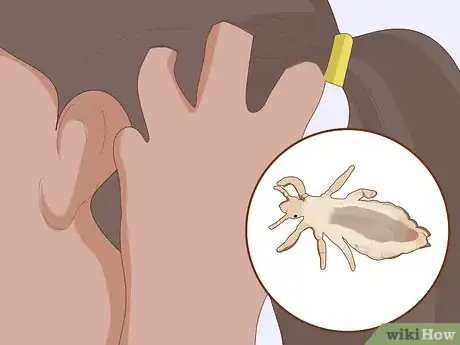
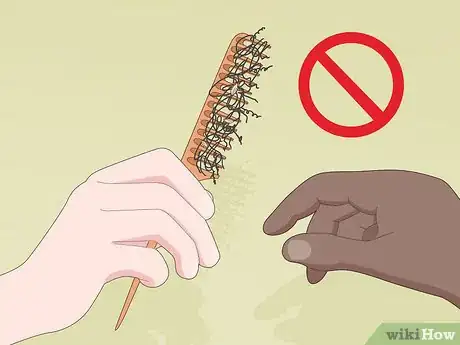
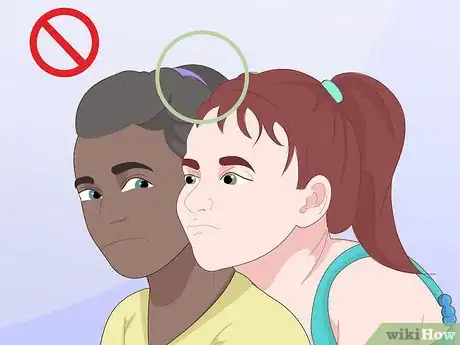
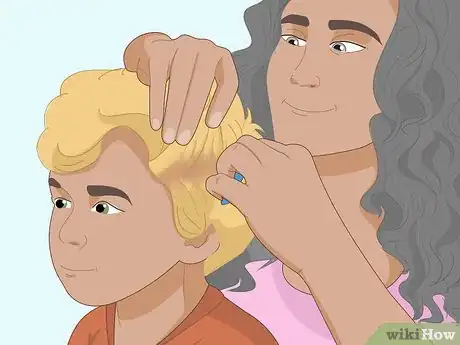
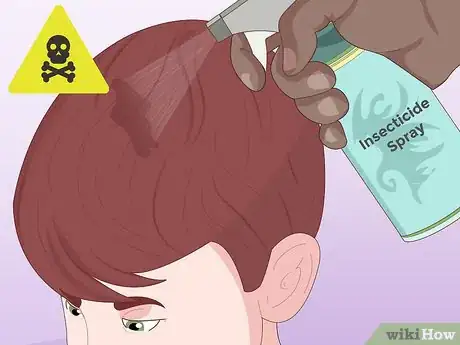
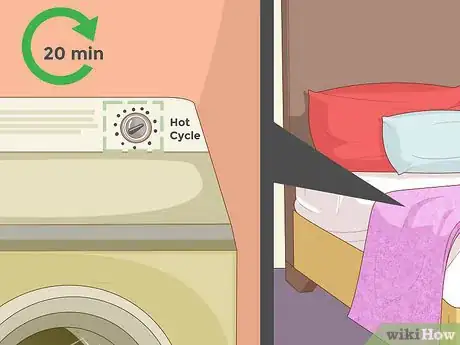
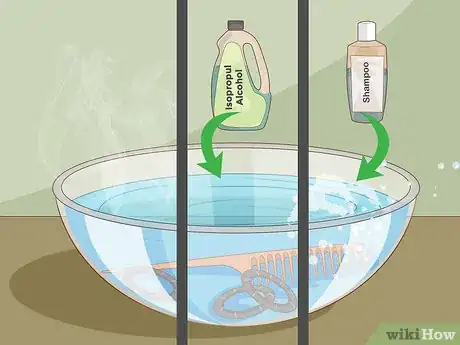
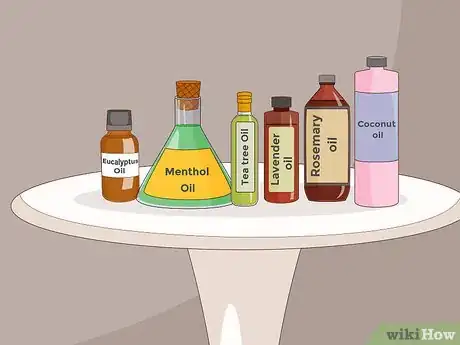

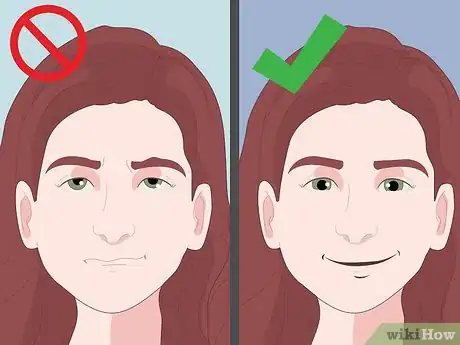


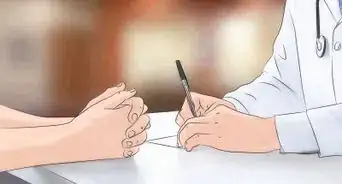
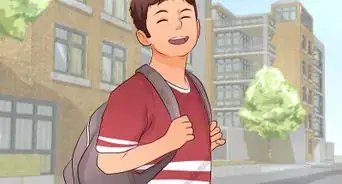
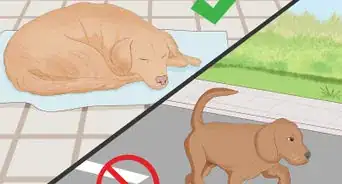
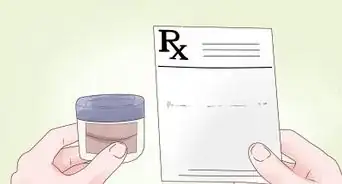
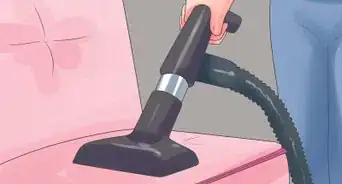

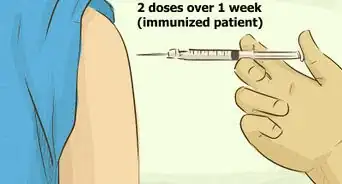

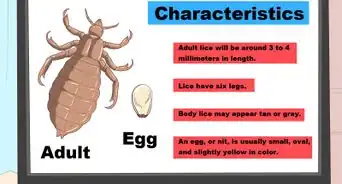
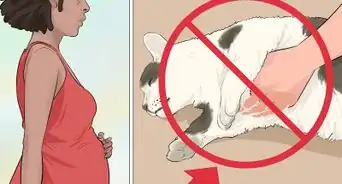
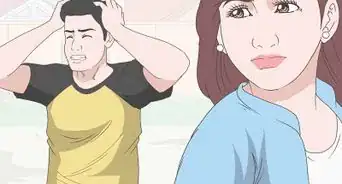













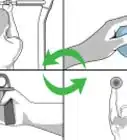

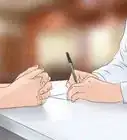



































Medical Disclaimer
The content of this article is not intended to be a substitute for professional medical advice, examination, diagnosis, or treatment. You should always contact your doctor or other qualified healthcare professional before starting, changing, or stopping any kind of health treatment.
Read More...